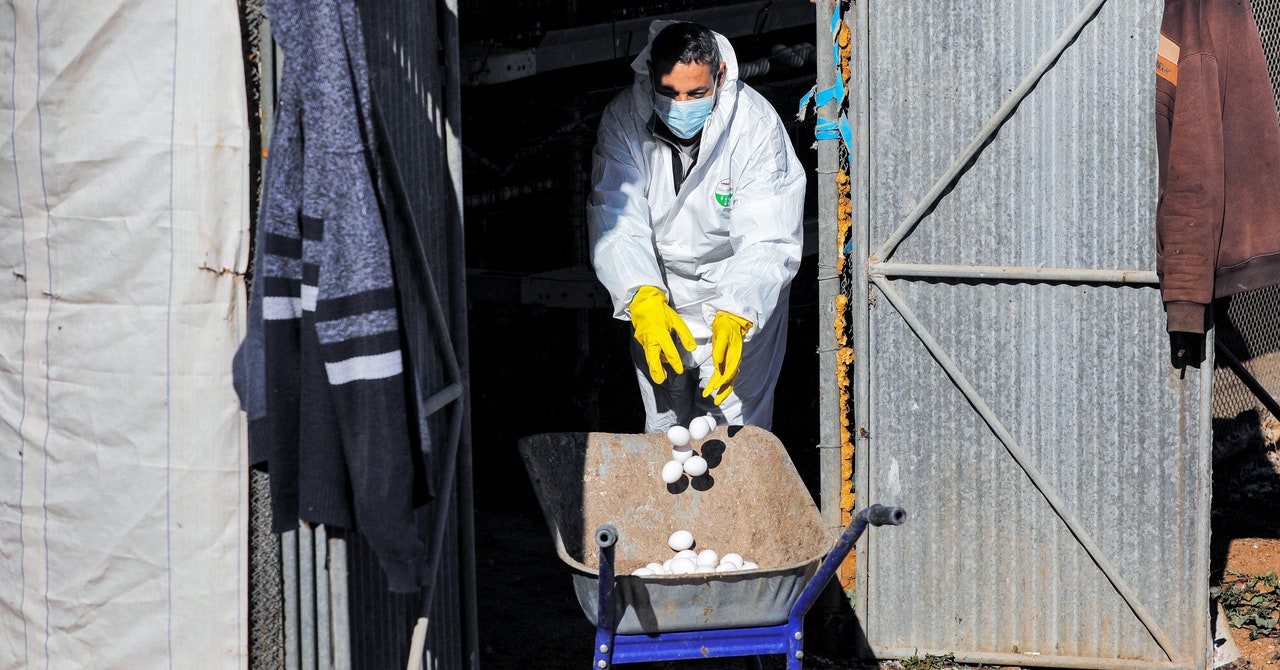
To understand the importance of those three ducks and the virus they were carrying, we need to take a quick tour through Flu School. Lesson One: The flu virus family tree is vast and sprawling; it contains types—A, B, C, D—and subtypes, designated with Hs and Ns. (Those are short for proteins that let the virus infect cells.) Just within the As, there are almost 200 subtypes; a few affect humans, but almost all of them can infect birds.
Lesson Two: For a long time, scientists thought humans were in little danger from all those other flu strains. That assumption was shattered in 1997, when an avian influenza, H5N1, jumped species in Hong Kong and infected 18 people, killing six of them. To shut it down, the local government slaughtered every chicken in the territory, denying the virus a host. That worked for a few years, but in 2003 H5N1 started to move across the world again, and it has been moving ever since.
Lesson Three: Avian flu can be dangerous to people, but it threatens some birds too. Waterbirds, chiefly ducks, carry it without illness, but it makes chickens sick. Here again, there are subcategories: Avian flu can be low-pathogenic, meaning that it makes birds mildly ill and slows down egg production. Or it can be highly pathogenic, or high-path: a fast-moving infection so vicious that it can kill an entire flock in two days. (A prominent poultry researcher once called it “chicken Ebola.”)
To sum all that up (there will not be a quiz): The flu found in the Carolinas is an H5N1, meaning it is of the subtype that normally infects birds but in the past has sickened people. It is a high-path variety, the kind that can wipe out domesticated flocks. It belongs to a strain related to that first species-crossing jump in 1997. And, to make matters worse, it represents just one instance of a remarkable amount of highly pathogenic H5N1 showing up in the world right now.
Last year, the World Organization for Animal Health (known by its French acronym, OIE) estimated that between May 1 and November 1, 41 countries experienced outbreaks of highly pathogenic bird flu, with 16,000 isolations of the virus reported just in October. Fifteen countries also reported outbreaks between October and December.
Occasional isolations of avian flu in wild birds are not unusual, but last fall high-path H5N1 began erupting in the United Kingdom with extraordinary intensity. Since October and into this year, the virus has been found in wild species, including swans, geese, shorebirds, and birds of prey. But it has also invaded poultry farms, primarily in Lincolnshire and Yorkshire. By January, more than 1 million chickens and other birds had been destroyed to stop it from spreading. In December, the UK’s chief veterinary officer called the occurrence of bird flu there “phenomenal,” saying the strain had spread to the largest number of farm properties ever seen.
At almost the same moment, Dutch authorities were ordering the slaughter of hundreds of thousands of poultry on farms in the country. In the Czech Republic, more than 100,000 hens died of avian flu on an egg farm, and another 100,000 birds and about 1 million eggs were destroyed to stop the virus from spreading further. In France, farmers feared the virus would invade the duck-raising southwest, the home of foie gras. Last week, the agriculture ministry ordered 2.5 million birds killed. In Italy, more than 4 million poultry died or were slaughtered between October and December. And the Friedrich Loeffler Institute, the animal-disease research unit of the German government, said at the end of December that Europe was experiencing “the strongest avian influenza epidemic ever,” with cases reaching as far north as the Faroe Islands and as far south as Portugal.


